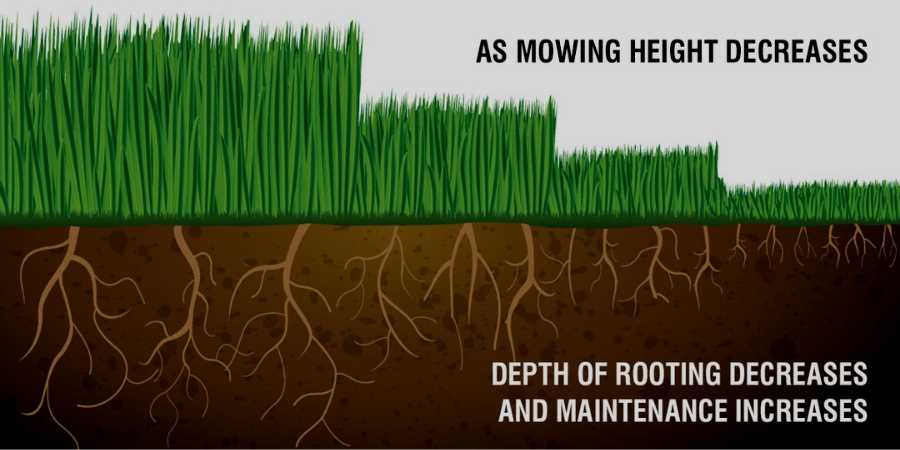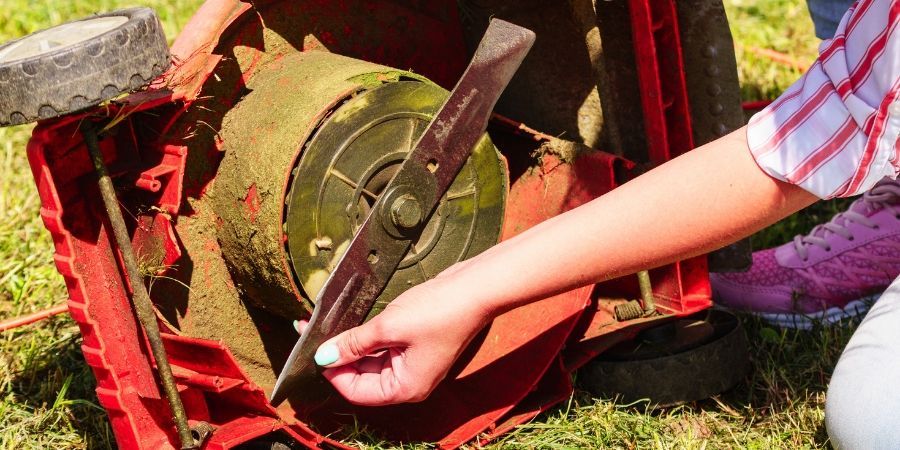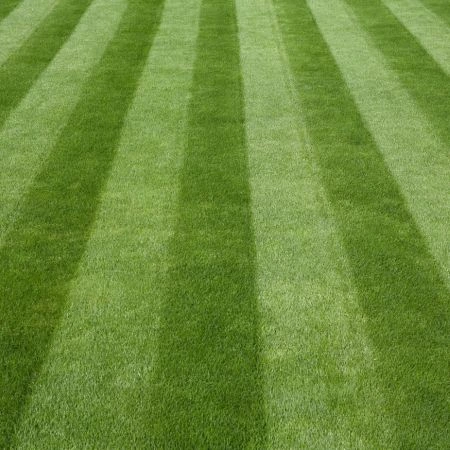How to Mow Your Lawn Correctly
- Milorganite AgronomistMay 17, 2025
Six Lawn Mowing Tips
1. Mow Tall for a Healthier Lawn
Taller grass. Longer roots. Healthier lawn. The height of the grass is an indicator of the depth of its roots. So, mow tall. A simple guideline: cut off only one-third of the height of the grass at a time. Longer grass reduces water evaporation and chokes out weed seeds from germinating. Check for the optimum mowing height for your variety of grass.

If your lawn got away from you while you were out of town last weekend, the one-third rule still applies. (Sorry.) Mow off a third, wait a couple of days, and mow off another third until you reach the optimum height for your grass variety. If the clippings are long, mow in the other direction at the same height to chop them into smaller pieces. Learn more on how to take care of an overgrown lawn with Allyn Hane.
You’re asking for trouble if you scalp or “buzz cut” your lawn. It exposes soil, which can lead to the lawn drying out faster, and creates a nursery for weed seeds to get started.
2. Dull Mower Blades Harm Your Lawn
Keep mower blades sharp. Consider having them sharpened 2–3 times during the season. Dull blades tear grass and fray ends, which causes it to dry out more quickly and makes it more susceptible to insects and diseases.
There are a number of DIY sites and online videos that walk you through sharpening your mower blades at home.

3. Recycle Your Grass Clippings
Put grass clippings to work. Keep grass clippings out of landfills! Grasscycling is recycling grass clippings by leaving them on the lawn—composting in place. According to a study conducted in Virginia, a 1,000 sq ft lawn annually can produce 200 to 500 pounds of clippings. Grasscycling keeps clippings out of landfills.
Clippings are too valuable to throw away. It’s free fertilizer, which may provide 15–20% of the nitrogen your lawn needs annually. Grass is about 80% water. Clippings quickly break down and release nutrients back into the soil, as well as add organic matter, which promotes a healthy soil ecosystem.
4. Stick to a Lawn Fertilization Schedule
Fertilize when it's right for your area using a low-nitrogen fertilizer, such as Milorganite. Other fertilizers can cause your lawn to grow very quickly, requiring you to mow more frequently, particularly right after fertilizing. Milorganite is low-nitrogen and slow-release, which keeps your lawn growing at a steady pace. The additional non-staining iron will also keep it green.
5. Change Your Mowing Patterns
Vary your mowing pattern weekly. This week, this way. Next week, that way. Changing direction reduces ruts and compressed soil. For large lawns, you can use four directional patterns in rotation: north/south, east/west; and diagonally, southeast/northwest, and southwest/northeast. For small yards, do your best to vary the pattern.
Consider a creative expression like you see on baseball fields—field art on turf canvases. There’s even a book on the subject, “Picture Perfect: Mowing Techniques for Lawns, Landscapes, and Sports,” by David Mellor, the “godfather” of mowing patterns.
When possible, mow areas of the lawn when they’re in the shade or the entire lawn during cooler times of the day. Grass loses less water, and it reduces heat stress.

6. Border Your Lawn
Make mowing easier and less time-consuming. A border around a garden bed helps separate the garden and lawn, creates a clean edge, helps to prevent mulch from spilling into the lawn, and makes mowing easier and less time-consuming. In the past, a spade-cut edge, or trenching, was standard. Now it’s considered high maintenance, compared to other methods.
Edging is a transition zone between your lawn and landscaping or garden. Around a raised bed, it provides a buffer to help prevent weeds and volunteer plants from growing, greatly reducing or eliminating the need to string trim.
A variety of materials are available that fit a wide budget range. Bricks, gravel, stone, poured concrete, extruded concrete, concrete pavers, or tightly packed crushed limestone are all possibilities. Many color, tint, and texture options are available to match the style of your home and yard.
Install edging low enough for mower wheels to ride on it easily—about the same soil level as the lawn. A wider border can serve as a safety zone so you can more easily cut around or under plants that would normally overhang the lawn.

